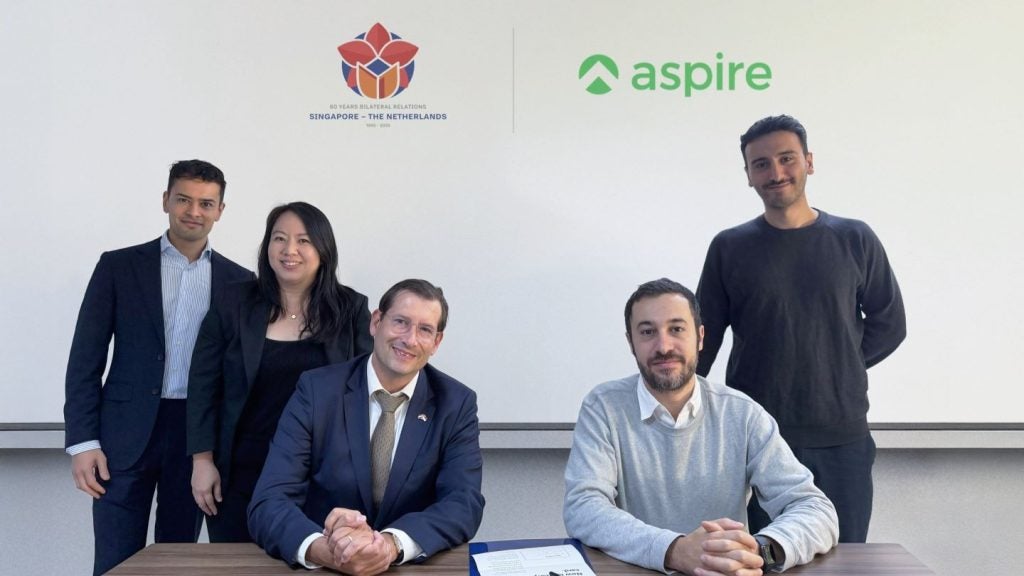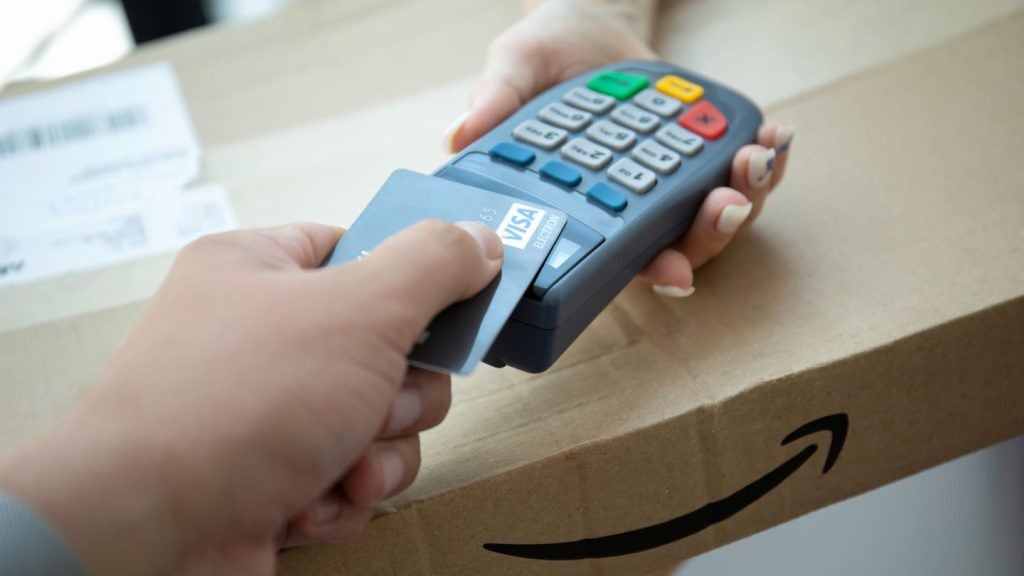transaction systems to cutting edge retail payments technology,
Singapore is in the forefront of the development of electronic
payments. Much of this comes thanks to a highly innovative payments
industry and tech-savvy consumers’ enthusiasm for new
technology.
covering an area of 707 square kilometers (273 square miles)
Singapore is the smallest country in South East Asia. But what it
lacks in size it has more than made up for in economic terms.
Singapore’s GDP of $161.3 billion in 2007 ranked it as the world’s
45th largest economy while in terms of GDP per capita of $35,163 it
ranked 17th. To no small extent this impressive economic
performance has been supported by one of the world’s most advanced
and progressive electronic payments infrastructures.
payments infrastructure was laid in 1976 with the establishment of
Banking Computer Services (BCS) by Singapore bank Oversea-Chinese
Banking Corporation (OCBC) and the Singapore unit of UK bank HSBC.
Initially focused on data processing for the two banks BCS was in
1981 awarded the contract to establish and operate the Singapore
Automated Clearing House (SACH) for the clearing of Singapore and
US dollar cheques.
in 2000, has played a key role in ongoing development of
Singapore’s payment system. Among significant developments was BCS’
development of a fully automated inter-bank transaction processing
platform (eGIRO) in 2000 which replaced the former 17 year-old
semi-automated GIRO system. eGIRO permits a participating bank to
transfer funds through direct debits and credits, to the accounts
of other participating banks.
Monetary Authority Singapore (MAS), the value of inter-bank eGIRO
transactions increased from S$80.7 billion ($57 billion) in 2001 to
S$186 billion in 2007, a CAGR of 14.9 percent. During the period,
transaction volumes increased from 34 million to 81 million.
 Singapore’s first
Singapore’s firstreal time gross settlement system, the MAS Electronic Payment
System (EPS), was developed by BCS and launched in 1998. In 2006
this system was replaced by an upgraded version, MEPS+ which
features improvements such as advanced queue management
capabilities, automated collateralised intra-day liquidity
facilities and automated gridlock resolution. Transaction volumes
via MEPS and MEPS+ increased from 1.87 million to 3.42 million
between 1999 and 2007 while the total value of transactions
increased at a CAGR of 6.5 percent, from S$9.237 trillion to
S$15.274 trillion.
was the development of a cheque truncation system by BCS’ wholly
owned unit BCS Information Systems in conjunction with the SACH in
2003. Claimed by BCS to be the first of its kind in the world, the
cheque processing system, IS Clear CTS, enables the capture and
transmission of cheque images online, facilitating realtime
clearing by SACH.
prevented the number of cheques cleared by the SACH falling
steadily for a number of years. Between 2002 and 2006, for example,
the number of Singapore dollar denominated cheques used by
non-banks fell from 90.7 million to 84.3 million. However, in 2007
there was a small increase, cheque volume increasing to 84.9
million (4.2 percent of total non-bank transaction volume) with a
total value of S$626.7 billion. In addition US dollar cheques
valued at a total of $32.7 billion were processed in 2007.
payments system is its participation in the Continuous Linked
Settlement (CLS) System, an organisation comprising 57 shareholder
banks that facilitates realtime settlement of foreign exchange
transactions in the world’s 15 most traded currencies. Three
Singapore banks, DBS Bank, OCBC and United Overseas Bank (UOB) are
CLS shareholders and operate a common clearing utility, Clearing
& Payment Services, to aggregate and share the processing of
their CLS transactions.
international electronics payments field, the MAS is one of 13
members of the Bank for International Settlements’ (BIS) Committee
on Payment and Settlement Systems. The BIS comprises 55 central
bank members.
Foreign interest

Access deeper industry intelligence
Experience unmatched clarity with a single platform that combines unique data, AI, and human expertise.
Singapore’s large volume electronic transaction processing systems
have attracted foreign interest and BCS has in particular achieved
considerable success beyond its home country. BCS has, for example,
supplied real time gross settlement solutions to central banks in
China, Bahrain, Hong Kong Indonesia, Malaysia and Thailand.
payments arena are paralleled in Singapore’s retail payments
environment driven in large measure by a government that has placed
innovation high on its agenda and a tech-savvy public.
of Asia’s first mobile banking service, Singapore mobile phone
service provider M1. In 2000 in another notable first, OCBC
launched Asia’s first stand-alone internet bank, finatiQ, today
still a key player in Singapore internet banking market of over 1
million active users.
payments is reflected in data provided by the BIS. According to the
BIS, 377 electronic transactions per capita were recorded in 2006,
placing the country among the world’s leaders in this respect. For
example, according to data published by Finland’s central bank, 290
electronic transactions per capita were recorded in Finland in
2006. This was the highest level in Europe and was followed by
Netherlands at 240 per capita and the UK at 200 per capita.
payments market has been the Network for Electronic Transfers
Singapore (NETS) established in 1985 by seven local banks to meet
the need for a centralised electronic payments operator. NETS is
today owned by three local banks: OCBC, DBS and UOB.
launch of an electronic funds transfer POS (EFTPOS) service
followed in 1988 by the establishment of a shared ATM
network.
including CashCard, Singapore’s first reloadable prepaid card,
introduced in November 1996 and still the most widely used of what
the MAS also refers to as e-money cards. According to NETS its
cards can be used at 12,500 merchants and across 30,000 points of
access, including retail outlets, educational institutions,
government establishments, toll roads and car parks.
considerable technological advances and the foundation of a number
of new branded products. The first significant of these came in
2001 with the emergence of the Touch ‘n Go CashCard, a dual
interface smart card facilitating contactless payments at retail
locations, toll roads and for public transport.
providers, EZ-Link, a unit of Singapore’s public transport
regulator the Land Transport Authority (LTA), entered the market in
April 2002. Initially the ez-link contactless payments card was
primarily used on public transport, but its use has gradually
extended to retail payments. According to the LTA over 8 million
ez-cards have been issued and some 4 million transactions are
processed daily via its system.
payments, EZ-Link launched Singapore’s first public trial of mobile
phones equipped with near-field communications (NFC) technology in
August 2007 in conjunction with Singapore telecommunications
company StarHub. The trial, which followed an initial internal
company trial, involves over 20,000 ez-link payment acceptance
points in the public transport and retail sectors.
of an in-house trial of mobile phones equipped with NFC contactless
payments capabilities in September 2007 in collaboration with
mobile phone service provider Singapore Telecommunications
(SingTel). The in-house trial has been followed by the launch of a
six-month public trial involving 250 SingTel and UOB customers
equipped with NFC-enabled Nokia 6131 mobile phones and 500
merchants. Up to S$500 can be stored on the phone.Two notable
features incorporated in what has been branded the NETS FlashPay
service are over-the-air (OTA) funds transfer of up to S$40 per day
from a credit card account and mNETS electronic coupons. mNETS
coupons are downloaded from “smart” posters or billboards using the
phone’s NFC capability and are redeemed via NETS FlashPay
contactless readers.
number of players – including technology companies NXP
Semiconductors (Netherlands) and VivoTech (US), and academic
institution the Singapore Polytechnic. VivoTech is also supplying
the NFC technology and OTA applications used in the project.
trial, NETS’s CEO, Poh Mui Hoon predicted that NFC will be “the
next big thing for electronic payments.”
NETS anticipates that three out of 10 mobile phones will be
NFC-compatible by 2012. SingTel’s Singapore mobile subscriber base
stood at almost 2 million at the end of 2007 while its total Asia
Pacific subscriber base was 136 million.
Major boost
Contactless payments in Singapore received a major boost in June
2006 with the publication by the national standards and
accreditation body SPRING Singapore of the world’s first nationwide
interoperable contactless micro-payment standard. The standard is
dubbed CEPAS, an acronym for the Singapore Standard for Contactless
ePurse Application.

US Tariffs are shifting - will you react or anticipate?
Don’t let policy changes catch you off guard. Stay proactive with real-time data and expert analysis.
By GlobalDataDevelopment Authority (IDA) of Singapore, LTA, NETS and industry
body the Singapore IT Standards Committee. When fully deployed
nationwide by 2010, CEPAS will eliminate the need for consumers to
carry a multiplicity of cards for small value payments ranging from
transport to retail purchases.
according to the IDA, to assist in opening the market to a greater
number of players. Indicative that this objective is being met,
StarHub announced in June 2008 that it would partner with Japanese
mobile service provider NTT DOCOMO to launch the latter’s highly
successful payments solution Osaifu-Keitai in Singapore.
Osaifu-Keitai incorporates Sony’s FeliCa contactless payments chip
in a mobile phone.
 Enthusiastic
Enthusiastic
adoption of e-cash cards in Singapore is reflected in the rapid
increase in the number of e-cash terminals deployed, particularly
since the launch of the ez-card. According to the MAS the number of
e-cash terminals jumped from 17,944 at the end of 2001 to 86,986 at
the end of 2006, the latter figure representing about 18,900
terminals per million inhabitants.
proliferation of e-money cards has had a clear impact on the use of
cash in Singapore. Notably, between 2002 and 2006 MAS data shows
that the number of cash withdrawals from ATMs fell by 44 percent
from 9.13 million in 2002 to 5.12 million in 2006 while the value
of cash withdrawals fell by 26 percent from SG$1.62 billion to
SG$1.2 billion.
remained virtually unchanged, dipping from 1,787 at the end of 2000
to 1,547 in 2002 before rising to 1,789 in 2006. This 2006 total
represent about 390 ATMs per million inhabitants, well below levels
in most developed countries. For example in 2006 the number of ATMs
per million inhabitants ranged from 309 in Sweden to 1,735 in
Canada.
brisk growth in the number of credit and debit cards. Between 2002
and 2006, the number of credit cards in issue increased at a CAGR
of 12 percent from 3.23 million to 5.09 million, or about 1.1 cards
per inhabitant, more than double the level in the UK. Total
spending on credit cards in Singapore increased at a CAGR of 9.4
percent between 2002 and 2006 from S$11.9 billion to S$18.64
billion.
credit card growth, increasing at a CAGR of 8.7 percent between
2002 and 2006, from 5.91 million to 8.26 million. Spending on debit
cards has however been robust, increasing at a CAGR of 16.9 percent
between 2002 and 2006 from S$7.79 billion to S$14.57 billion.
the other wide spectrum of payment instruments available to
Singaporeans indicates that the country’s drive to reduce the use
of paper-based transactions is solidly on track. Among objectives
in place is to double the annual value of transactions of
card-based payments, e-money schemes and mobile payments from
S$24.6 billion in 2006 to S$50 billion by 2010.







